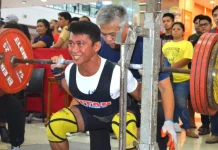Last Updated on February 2, 2024
As people age, it becomes increasingly important to maintain a healthy lifestyle. Exercise for seniors plays a significant role in improving physical health and overall well-being. Retirees who incorporate regular physical activity into their daily routine enjoy numerous benefits, such as maintaining a healthy weight, reducing the risk of chronic diseases, improving balance and flexibility, and enhancing cognitive function. This article will discuss the physical health benefits of exercise for seniors and provide a comprehensive guide to the best aerobic exercises for seniors.
Importance of Exercise for Seniors
Regular exercise is crucial for retirees to maintain physical health and well-being. As people age, their metabolism slows down, and maintaining a healthy weight becomes more challenging. Engaging in regular physical activity can help seniors maintain or lose weight by increasing their metabolism and building muscle mass, which helps the body burn more calories [1]. Additionally, exercise helps reduce the risk of chronic diseases such as cardiovascular disease, diabetes, and cancer [5].
Physical activity can also improve balance and flexibility, which reduces the risk of falls and related injuries. Exercise has been shown to improve cognitive function and reduce the risk of age-related cognitive decline [3].
Physical Health Benefits of Exercise for Seniors
Regular physical activity provides numerous physical health benefits for seniors. Some of the benefits include:
Weight Management
Maintaining a healthy weight can become increasingly challenging as people age, but regular exercise can help. Exercise increases metabolism and builds muscle mass, which helps the body burn more calories.
Reduced Risk of Chronic Diseases
Regular exercise can help reduce the risk of chronic diseases such as cardiovascular disease, diabetes, and cancer.
Improved Balance and Flexibility
Physical activity can improve balance and flexibility, which reduces the risk of falls and related injuries.
Enhanced Cognitive Function
Exercise has been shown to improve cognitive function and reduce the risk of age-related cognitive decline.
Reduced Risk of Depression and Anxiety
Physical activity can help reduce the risk of depression and anxiety, which are common among seniors.
Increased Bone Density
Regular exercise can increase bone density, which reduces the risk of osteoporosis and related fractures.
Improved Sleep
Physical activity can improve the quality of sleep and reduce the risk of sleep disorders.
Best Aerobic Exercises for Seniors
Aerobic exercise is an important component of any fitness routine, providing a wide range of health benefits. The following are some of the best aerobic exercises for seniors:
1. Brisk Walking
Brisk walking is a low-impact aerobic exercise that can be done almost anywhere. It is easy on the joints and can provide significant cardiovascular benefits.
2. Swimming
Swimming is a low-impact exercise that is easy on the joints and can provide a full-body workout. It can also be a social activity, providing an opportunity to meet new people and enjoy time with friends.
3. Cycling
Cycling is another low-impact exercise that can provide significant cardiovascular benefits. It can be done indoors on a stationary bike or outdoors on a traditional bike.
4. Dancing
Dancing is a fun and social way to get exercise, and it can provide significant cardiovascular benefits. There are many different types of dance, from ballroom to Zumba, so seniors can choose a style that suits their interests and fitness level.
Importance of Strength Training for Seniors
In addition to aerobic exercise, strength training is also essential for seniors to maintain a healthy body. It can help improve balance, prevent falls, and reduce the risk of osteoporosis. Strength training can also increase muscle mass and bone density, which tends to decrease with age.
Some of the best strength training exercises for seniors include:
Squats
Squats are a great exercise for seniors to improve lower body strength. Stand with your feet shoulder-width apart and squat down as if you are sitting in a chair. Keep your back straight and your knees over your ankles. Repeat for 10-15 repetitions.
Lunges
Lunges are another lower body exercise that can help improve balance and strength. Step forward with one foot and lower your body until your back knee almost touches the ground. Keep your front knee over your ankle and your back straight. Repeat on the other side for 10-15 repetitions.
Chest Press
Chest presses are a great exercise for strengthening the chest and arm muscles. Lie on a bench or the floor with weights in your hands. Slowly press the weights up towards the ceiling, keeping your arms straight. Lower the weights back down and repeat for 10-15 repetitions.
Bicep Curls
Bicep curls are an excellent way to strengthen the arm muscles. Stand with your feet shoulder-width apart and hold weights in your hands. Slowly curl the weights up towards your shoulders, keeping your elbows close to your body. Lower the weights back down and repeat for 10-15 repetitions.
Planks
Planks are an excellent way to strengthen the core muscles. Lie face down on the floor and prop yourself up on your forearms. Lift your body up so that it forms a straight line from your head to your toes. Hold for 30 seconds and repeat for 3-5 repetitions.
Staying active and maintaining fitness is crucial for seniors to live healthy and fulfilling life. Aerobic exercise, strength training, and balance exercises are all essential components of a comprehensive fitness routine. It’s essential to consult with a healthcare provider before starting any new exercise program and to start slowly and gradually increasing the intensity over time. Remember, it’s never too late to start working towards a healthier and more active lifestyle.
FAQs
- Is it safe for seniors to engage in strength training? Yes, strength training can be safe and beneficial for seniors when done correctly and with guidance from a healthcare provider.
- How often should seniors engage in physical activity? Seniors should aim for at least 150 minutes of moderate-intensity aerobic activity or 75 minutes of vigorous-intensity aerobic activity per week. It’s also recommended to engage in strength training exercises at least twice a week.
- Are there any precautions seniors should take when engaging in physical activity? Yes, it’s essential to consult with a healthcare provider before starting any new exercise program, especially if there are pre-existing medical conditions or concerns. Seniors should also start slowly and gradually increase the intensity over time to prevent injury.
- Can seniors improve their balance through exercise? Yes, balance exercises such as yoga, tai chi, and single-leg stands can help improve balance and reduce the risk of falls.
- What are the best types of aerobic exercise for seniors? Seniors should aim for at least 150 minutes of moderate-intensity aerobic activity a week, such as brisk walking or dancing, or 75 minutes of vigorous-intensity activity, such as hiking, jogging or running.
- How often should seniors exercise? Seniors should aim for at least 150 minutes of moderate-intensity aerobic activity a week, spread out over several days. In addition, strength training and balance exercises should also be incorporated into their routine.
- What are the benefits of exercise for seniors? Exercise can help seniors maintain a healthy weight, build muscle mass, improve balance and stability, and have numerous physical and mental health benefits.
- Should seniors consult with a healthcare professional before starting an exercise routine? Yes, seniors should always consult with a healthcare professional before starting any new exercise routine, especially if they have any pre-existing medical conditions.
- Can strength training help prevent falls in seniors? Yes, strength training can help build muscle mass and maintain bone density, which can help prevent falls and improve overall stability.
Additional resources for Active Aging click here.








